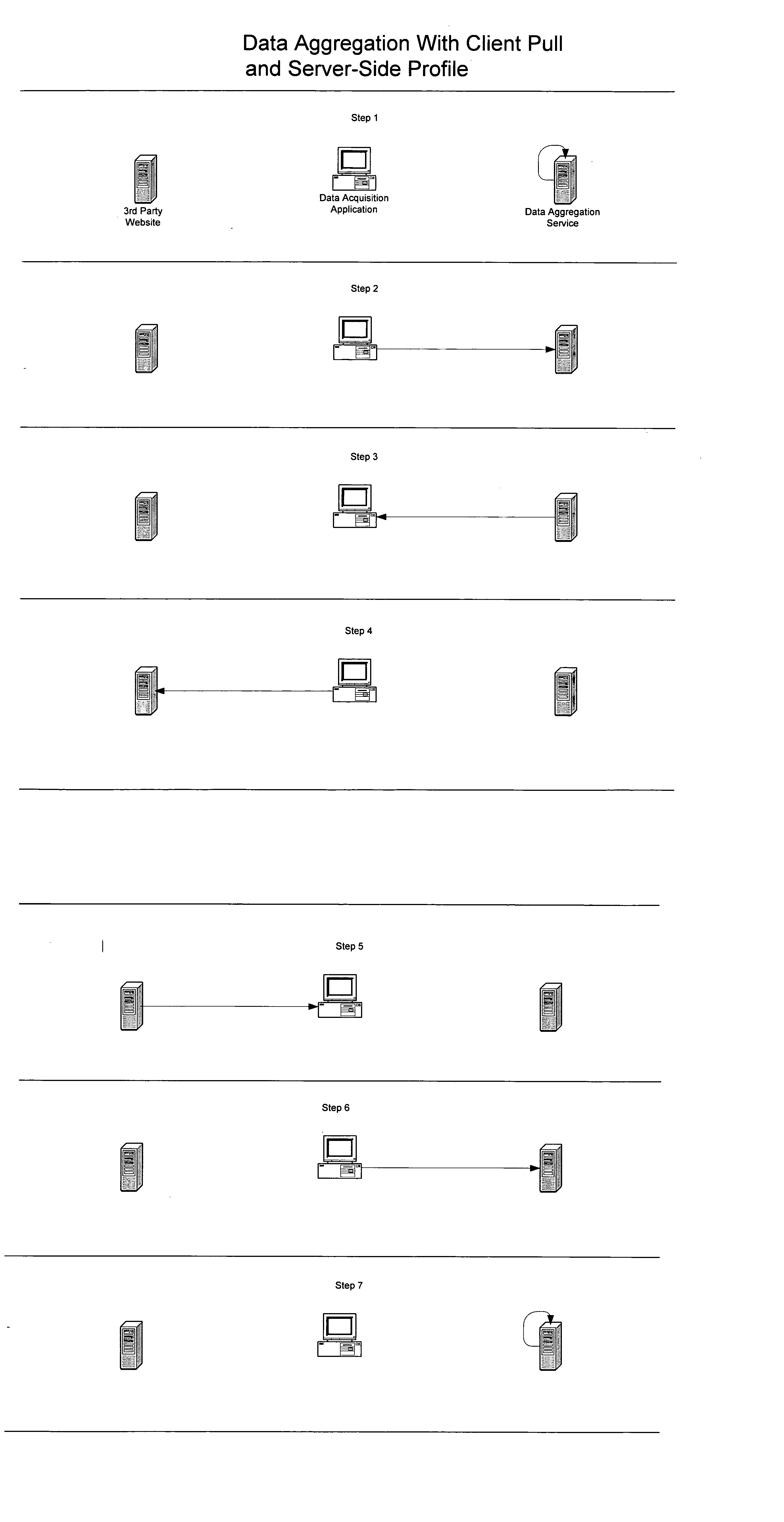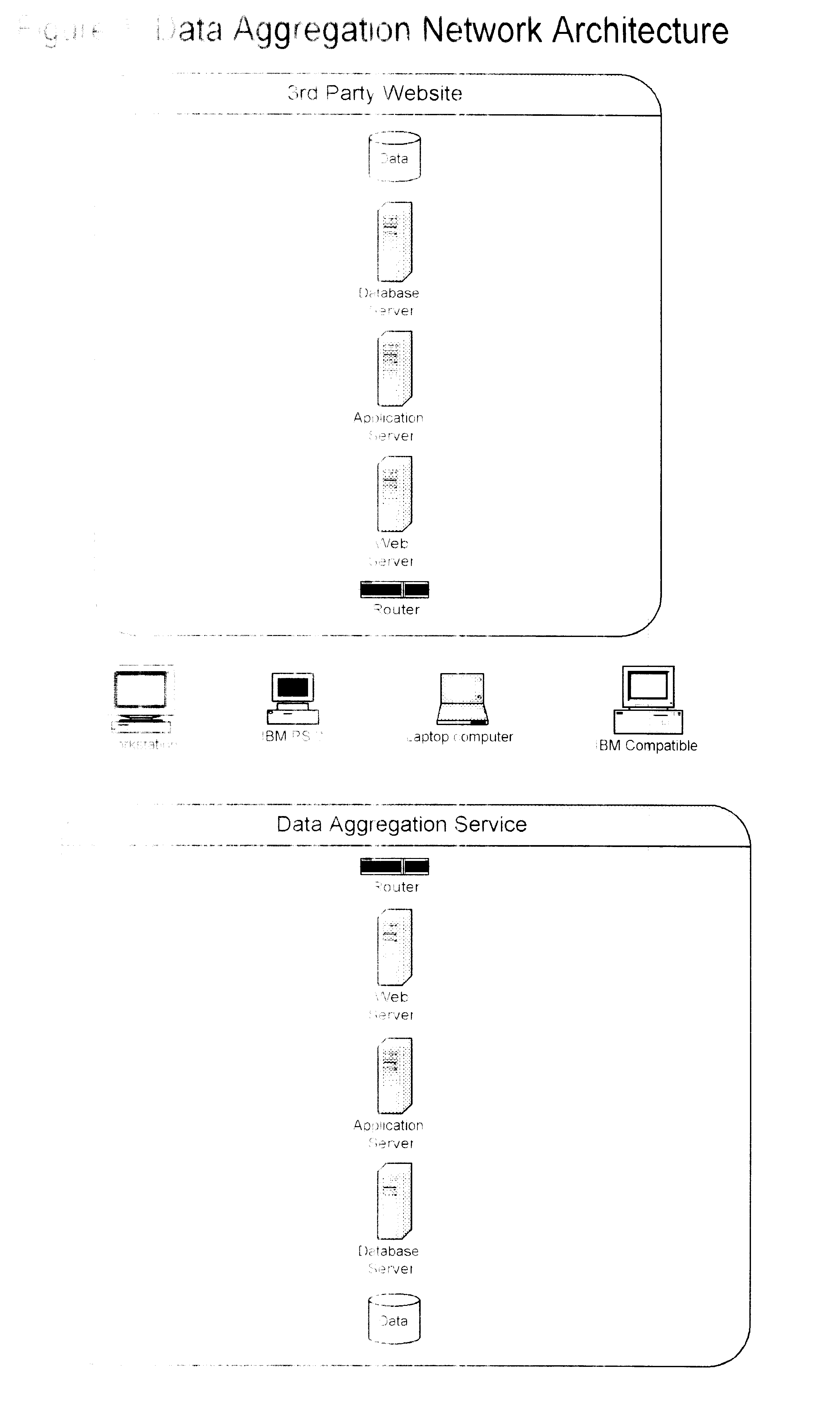Method for distributed acquisition of data from computer-based network data sources
a technology of computer-based network data and distributed acquisition, applied in computing, instruments, buying/selling/leasing transactions, etc., can solve the problems of increasing the cost of tickets, mislead user b, and caching such data, and achieve the effect of reducing the number of requests
- Summary
- Abstract
- Description
- Claims
- Application Information
AI Technical Summary
Benefits of technology
Problems solved by technology
Method used
Image
Examples
Embodiment Construction
[0176] FIG. 1 lays out a typical network hardware architecture over which the processes described in this invention occur. Applications and data described in FIGS. 6 and 7 reside on hardware devices similar to those depicted in FIG. 1.
[0177] The "3rd Party Website" may consist of a router (possibly with a firewall) connected to a web server connected to an application server connected to a database server connected to data that is possibly stored on hard drives or a disk array.
[0178] Likewise, the "Data Aggregation Service" may be structured similarly with a web server connected to an application server connected to a database server connected to data that is possibly stored on hard drives or a disk array.
[0179] Client machines (such as the "Workstation," "IBM PS / 2," "Laptop computer" and "IBM Compatible" depicted in the diagram) connect to both the "3rd Party Website and the "Data Aggregation Service" via the Internet (or similar method for connecting computers).
[0180] In FIGS. 2, ...
PUM
 Login to View More
Login to View More Abstract
Description
Claims
Application Information
 Login to View More
Login to View More - R&D
- Intellectual Property
- Life Sciences
- Materials
- Tech Scout
- Unparalleled Data Quality
- Higher Quality Content
- 60% Fewer Hallucinations
Browse by: Latest US Patents, China's latest patents, Technical Efficacy Thesaurus, Application Domain, Technology Topic, Popular Technical Reports.
© 2025 PatSnap. All rights reserved.Legal|Privacy policy|Modern Slavery Act Transparency Statement|Sitemap|About US| Contact US: help@patsnap.com



